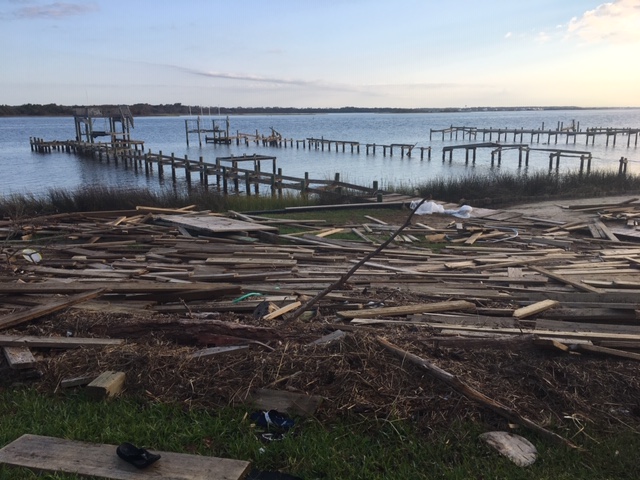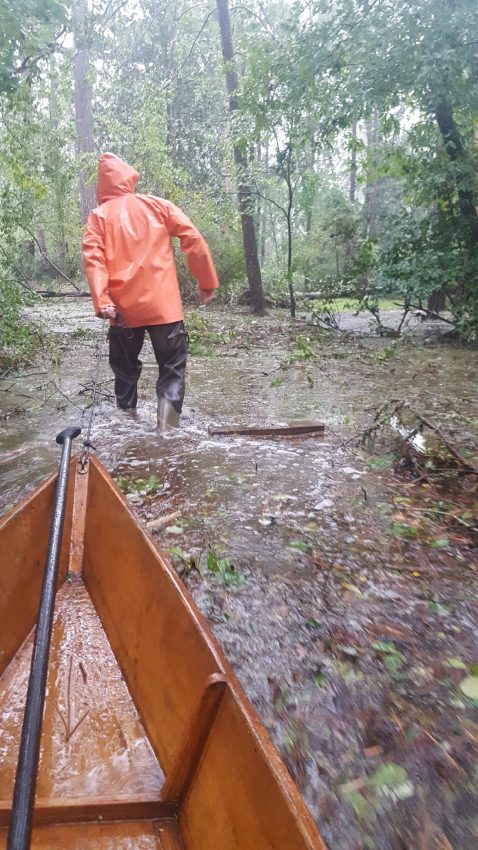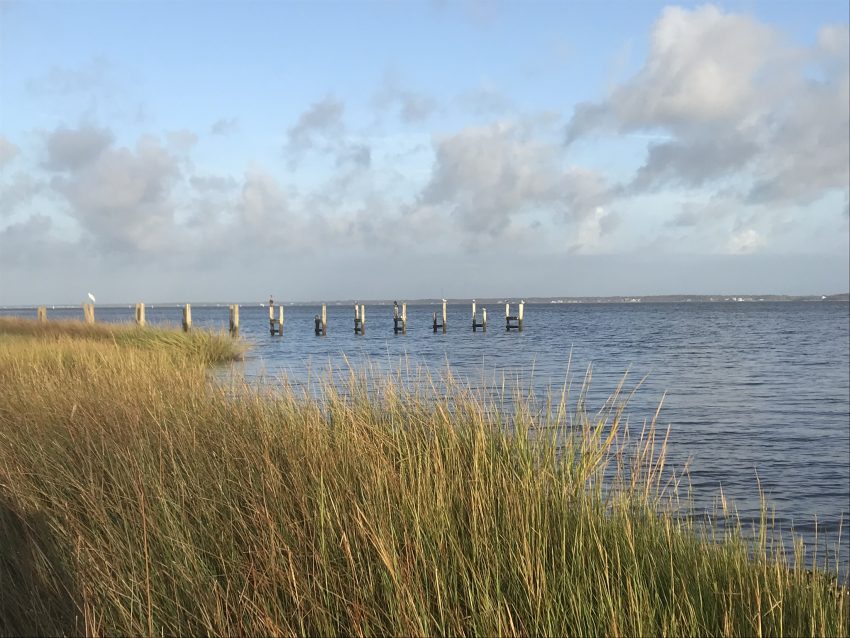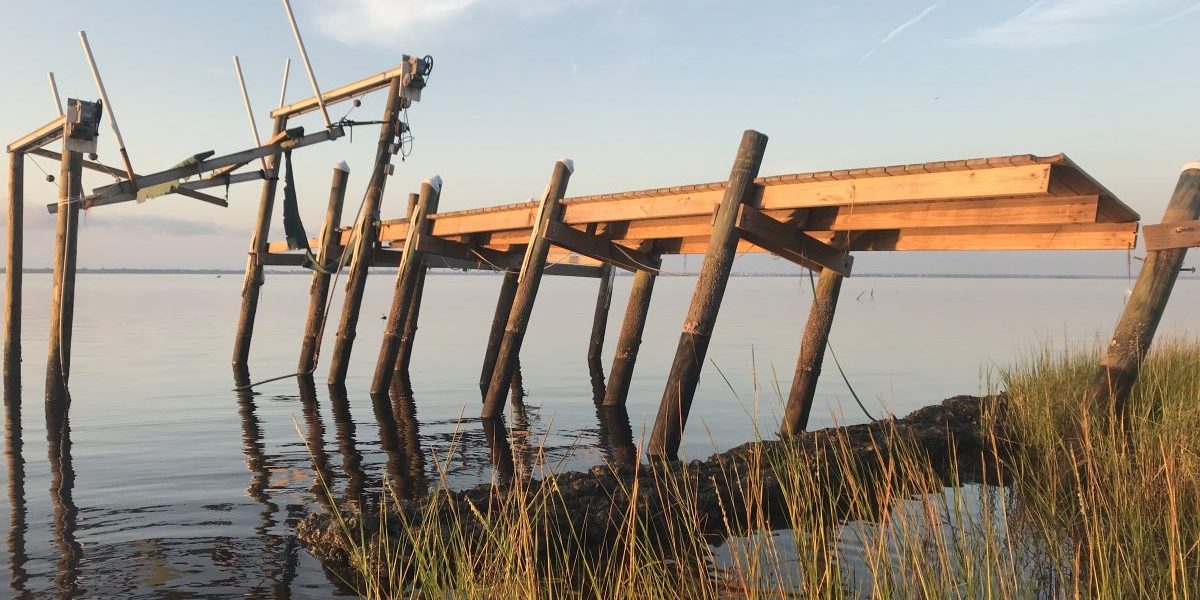Timing is everything. Last fall, the North Carolina Coastal Federation launched our Coastal Resilience Initiative to build our natural defenses against storms and rising tides. It turns out this work couldn’t be more timely with the arrival of Hurricane Florence. Now, the federation is working to help our coast recover and to proactively prepare for future storms.
Hurricane Florence’s sustained assault on North Carolina brought record-breaking rainfall, flooding and devastation to a huge number of communities in its path and caused an estimated $13 billion in damage. In the aftermath of the storm, major interstates were closed due to flooding, a huge amount of debris littered our coast and communities struggled to begin recovery efforts under extremely challenging conditions.
The federation is implementing short- and long-term hurricane relief efforts to help our coast recover and be more resilient to future hurricanes and northeasters. Our natural habitats are adapted to weather coastal storms, sea level rise and other stressors. While wetlands can’t completely protect us from the devastating flooding at the level of a storm like Hurricane Florence, healthy habitats – and good planning – can shield us from some of the worst impacts and can help our communities recover more quickly.
In the wake of Florence, the federation staff and volunteers fanned out and surveyed how our coastal resilience projects performed. The vast majority of our projects performed extremely well, protecting our natural resources and mitigating the impacts of the storm on our coastal communities. This includes our living shoreline projects that protected miles of shoreline from erosion, our water quality retrofit projects that helped manage and contain large amounts of rain and the thousands of acres of restored wetlands that held back billions of gallons of rainfall and stormwater pollution.
Following the storm, the federation released recommendations to North Carolina Governor Roy Cooper and the North Carolina General Assembly to guide recovery on our coast and to make our coast stronger and more storm resilient in the future. Those recommendations include support for cleaning up marine debris, repairing stormwater infrastructure and streamlining the permitting process for living shorelines.
This is a long-term approach to a long-term challenge — but you can help our coast recover today.
Make your gift today to build our natural defenses and make our coast more resilient to future storms.
Because a healthy coast is our best defense.
Path to Recovery
Our hearts go out to the many people whose homes and livelihoods were damaged by this storm. In the coming months, the federation is reaching out to these families and communities to offer guidance on the best road to recovery— from installing living shorelines to protect waterfront property to using low-impact development techniques to minimize flooding.
Docks, walkways, bulkheads and other structures built in flood prone areas became floating battering rams. They knocked down other docks, damaged bulkheads and houses and pushed over trees. All the pressure-treated wood that now litters our coast is classified by the United States Environmental Protection Agency as hazardous waste and cleanup is a huge challenge. We are working with the North Carolina Department of Environmental Quality and our local communities to clean up this debris and will encourage stronger building codes for the future.
Hurricane Florence degraded water quality over much of the coast. The Category 1 hurricane also flooded lots of homes and businesses that had never flooded before. These are acute problems that are hard to avoid with 30 inches of rain. However, as more of our coast is paved, ditched and drained, these problems will become more chronic. Our low-impact development strategies provide a better approach for managing stormwater to improve water quality and reduce flooding.



Our living shoreline projects that pair marsh grasses with oyster bags or stone sills came through the storm in great condition and protected many miles of shoreline from erosion. We saw a lot of bulkheads in the same areas that failed, resulting in significant property damage. At our urging, the General Assembly authorized a temporary rule to streamline the permitting process for living shorelines. In the coming months, we’ll help property owners install living shorelines rather than bulkheads.
The thousands of acres of wetlands we have restored over the past decade did an enormous job of reducing downstream flooding. These wetlands functioned like big sponges to hold back billions of gallons of rainfall. If these lands had not been restored, downstream flooding would have been worse and that runoff would have dumped into our estuaries within just a few hours, further polluting our coastal waters. We are now working to restore more than 7,000 additional acres of wetlands along our coast.
Florence proved that our natural habitats buffer our coast when extreme weather strikes. If we protect and restore these habitats and incorporate them into our developed landscapes, they will protect us from nature’s furies. We’ll continue to guide local governments on implementing low-impact development techniques – taking action to protect the habitats that keep us safe.
We will also continue to raise awareness about how our natural habitats— and good planning— can shield us from some of the worst impacts and can help our communities recover more quickly. We will carry this important message to the forefront through our print publications, our award-winning online news service and through workshops and trainings.
Changing the way we protect our coast against storms and rising sea levels is a long-term challenge. Together, we can help our communities and habitats recover and also lay the groundwork for a healthy and productive future for our coast. It’s worth it.

